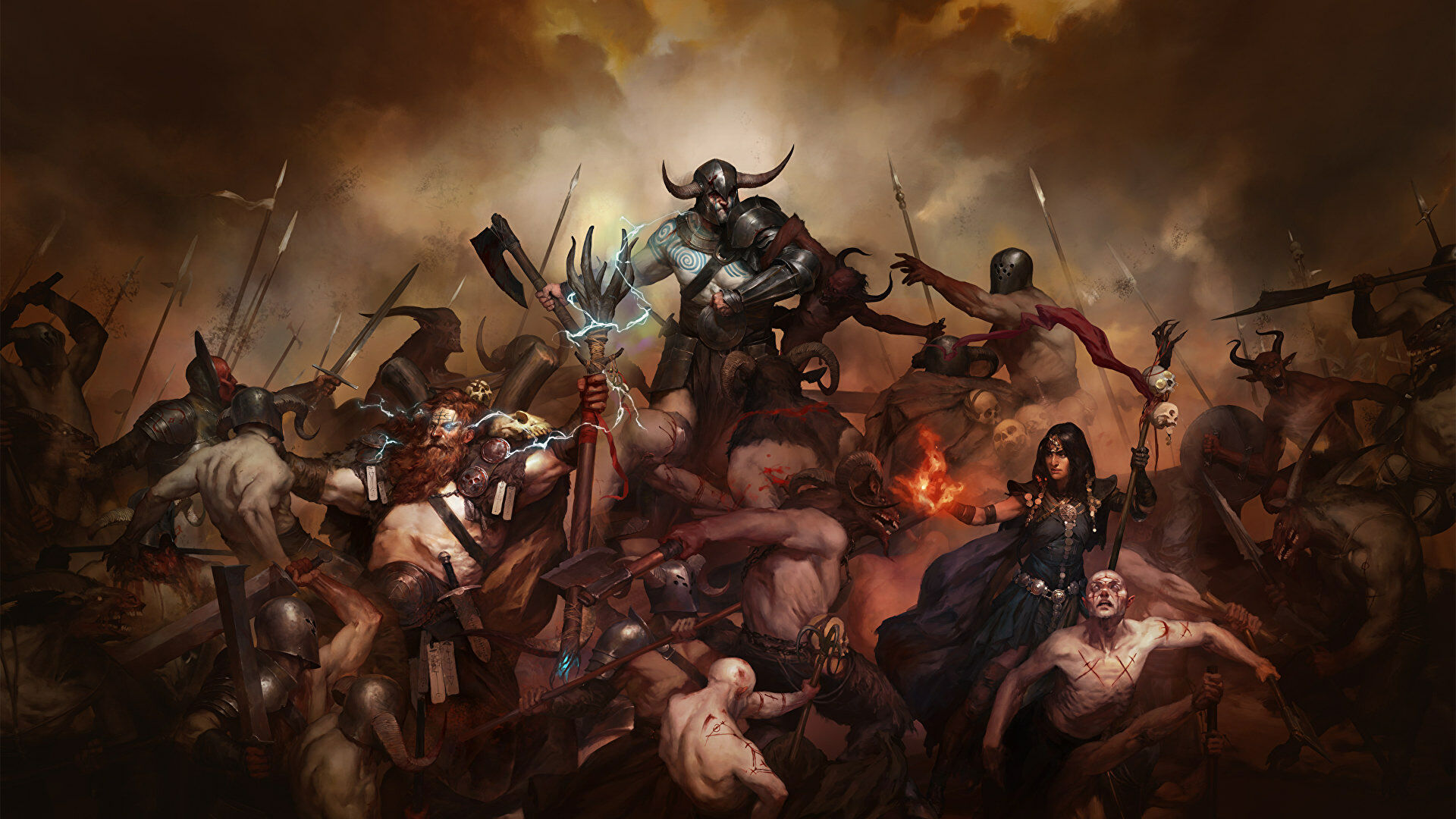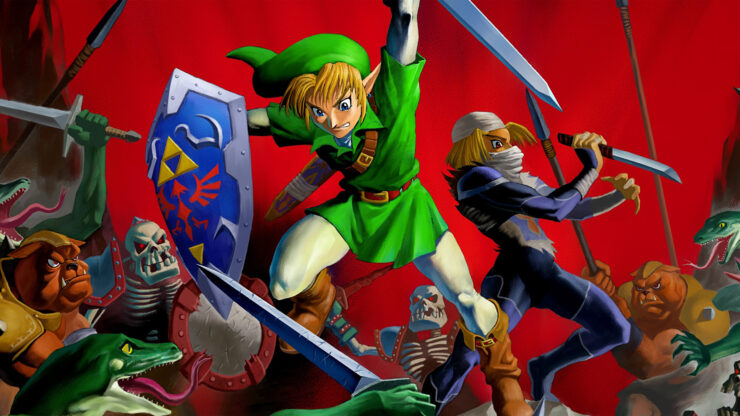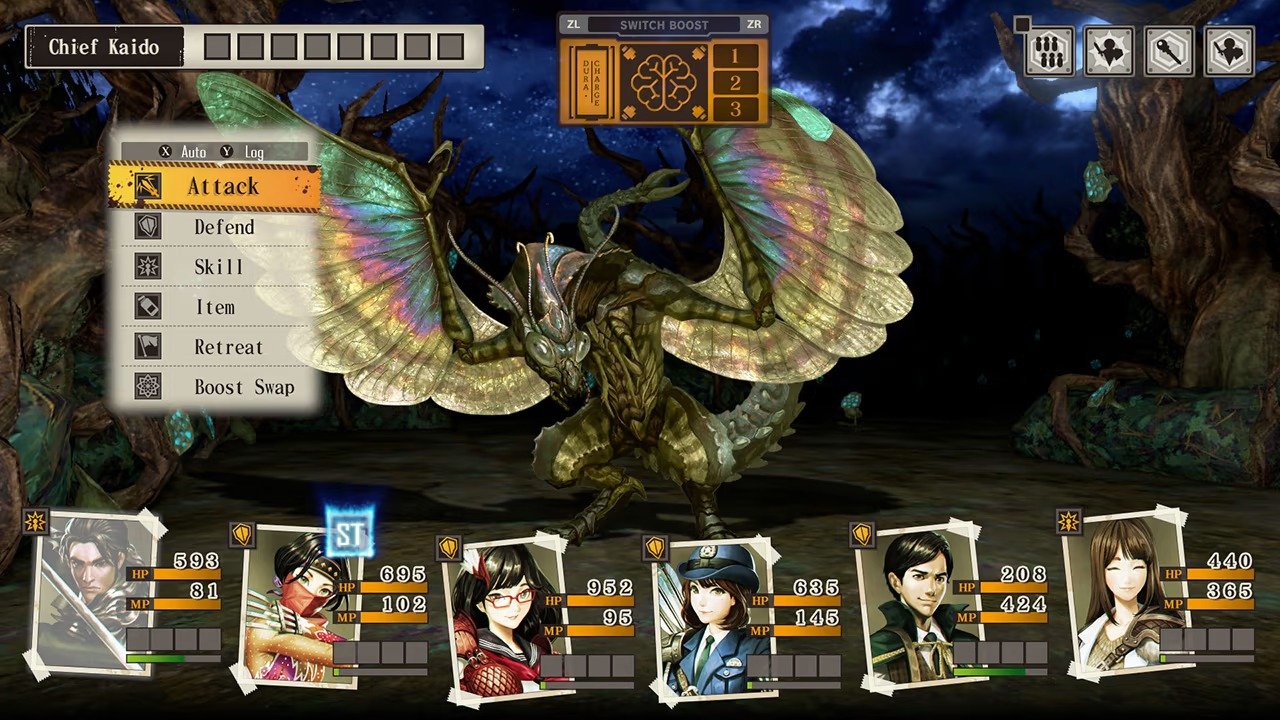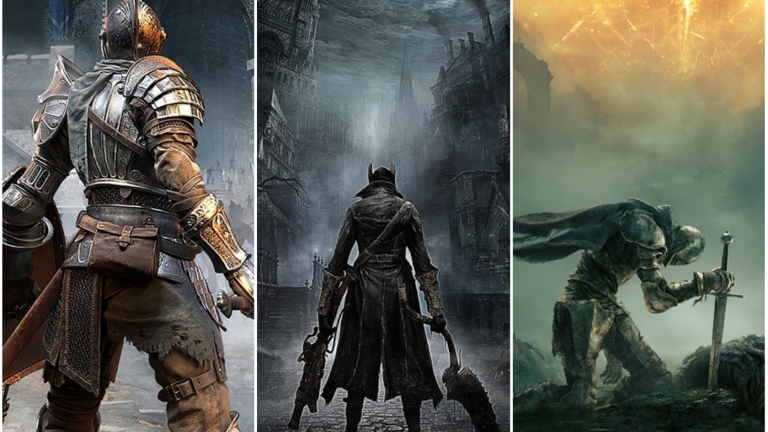
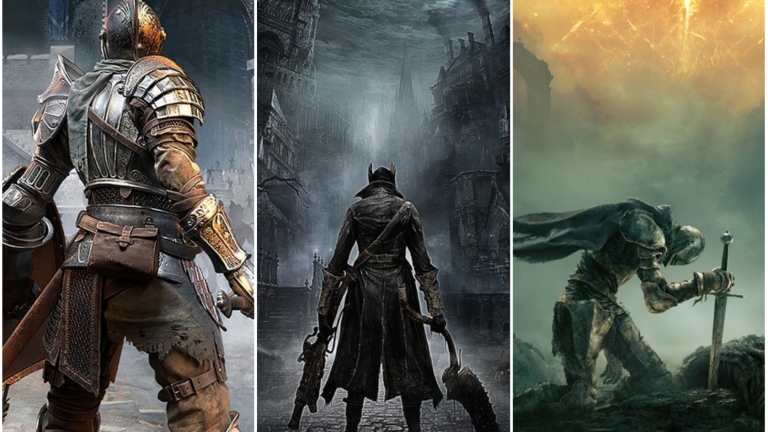
FromSoftware’s Soulsborne games are synonymous with difficulty. However, the fact that we so often talk about the difficulty of those games whenever they’re mentioned means that some gamers assume that all Soulsbornes are equally hard. However, that’s not entirely accurate.
Developing video games is one big learning experience. Every new project is the product of the errors a company made in the past and what they hope to accomplish moving forward. That approach is clearly evident when viewing the evolution of FromSoftware’s Soulsborne games. Their quest to produce some of the most engrossing and challenging action/adventure titles on the market has led to them gradually refining some of the genre’s core concepts over the years. It has also encouraged them to find new ways to balance their games while still ensuring that they are sufficiently challenging for veteran players. So, while many of the studio’s games are ultimately pretty difficult, some Soulsborne games are more suited to newcomers, while others offer even genre veterans more than they can handle.
Before we get into these rankings, though, here are a few points to consider:
- For the sake of conversation, we’ve included Sekiro and Elden Ring in these rankings. While both games’ technical Soulsborne credentials are up for debate, both are usually spiritually “adopted” as Soulsborne titles during discussions of FromSoftware’s Soulsborne era.
- Similarly, we elected to list 2009’s Demon Souls and the Demon’s Souls remake as separate games. Ultimately, it was determined that each features enough balance changes to justify separate entries
- These rankings are based on the base games and not DLC, mods, fan patches, or any additional content. Since not all of these games have DLC or equal amounts of DLC, that seemed to be the fairest way to approach these rankings.
With that out of the way, here’s how we would rank every FromSoftware Soulsborne game from easiest to hardest.
8. Elden Ring
Elden Ring is FromSoftware’s biggest Soulsborne title to date. However, since that open-world game offers Soulsbrone fans so many more options than before, that also means that it offers more ways to make some challenges easier than they may otherwise have been.
Since Elden Ring players can explore the Lands Between at their leisure, they can always have adventures away from more beaten paths. Said adventures typically reward explorers with more XP, currency, and powerful items. Granted, grinding is a normal part of any Soulsborne, but in Elden Ring, players can trivialize many requisite dungeons and bosses by just exploring, gaining as much XP as needed, and uncovering a new weapon or three.
Furthermore, while players can also ease into most Soulsborne games by summoning an ally or two, Elden Ring also allows gamers to summon Spirit Ash allies. Unlike normal NPC summons, Spirit Ashes come in a variety of forms and can even be upgraded. While not every Spirit Ash is right for every occasion, many can be life savers. That’s especially true of the powerful Mimi Tear which, even after its nerf, allowed many Elden Ring players to trigger a kind of “easy mode” option for boss fights.
Elden Ring offers some brutal optional and late-game challenges, but this still feels like the most approachable FromSoftware Soulsborne game yet.
7. Demon’s Souls (2009)
The Demon’s Souls remake retains many of the mechanics featured in the original version of the game, which should, in theory, make it just as difficult. Instead, the first version of Demon’s Souls is noticeably easier than most Soulsborne titles simply because its gameplay balance was…not great.
While Dark Souls was the game that put FromSoftware and the Soulsborne genre on the map, Demon’s Souls was the company’s real stab at the Soulsborne concept (minus some spiritual predecessors) and it shows. The game’s enemy AI was easily exploitable, and many bosses went down without much of a fight. However, the biggest issue with Demon’s Souls‘ difficulty balance was the power of the game’s healing items.
Most Soulsborne games force players to make do with a limited supply of healing flasks that are replenished at checkpoints. However, Demon’s Souls instead made players rely on collectible healing herbs. The problem was that the game didn’t really limit how many healing herbs players could hoard. While gamers couldn’t stuff infinite herbs in their pockets, they could trivialize most sections by farming healing items, tanking hits, and then healing all their lost damage while still having plenty of herbs left over.
While players aren’t invincible in the original Demon’s Souls and can still die pretty easily, they need to intentionally handicap themselves and their healing item collections in order to make the game truly difficult. The game’s often overpowered magic and ranged attack options also made many PvE fights easier than they should be.
6. Dark Souls 3
The original Dark Souls was the product of the lessons FromSoftware learned while developing Demon’s Souls. Likewise, you could argue that the studio used everything it learned from creating Bloodborne to develop Dark Souls 3.
In many ways, Dark Souls 3 is the easiest Dark Souls game because FromSoft had ironed out many of the little problems from previous entries. Combat in that game is far more polished and faster than it was in Dark Souls and Dark Souls 2. The same could be said of Bloodborne, but unlike that title, Dark Souls 3 features far more defensive options (such as powerful shields) and parries that don’t rely on ammunition.
Generally speaking, Dark Souls 3 offered more ways to deal with the game’s toughest challenges. The game’s spells weren’t based on limited charges, which meant that players could rain down damaging bolts, refill their mana with a special Estus Flask, and continue their magical assault. Moreover, the game introduced Weapon Arts, which also relied on mana and gave melee-oriented players weapon-bound abilities that opened up new combat avenues. Why wait for a shielded enemy to drop their guard when you have a katana that can pierce shields?
Before Elden Ring, Dark Souls 3 was the culmination of all the lessons FromSoftware learned while producing Soulsborne games. That led to a variety of vital quality-of-life improvements that made Dark Souls 3 the most accessible game in the Dark Souls franchise as well as arguably the easiest.
5. Bloodborne
Bloodborne was a pleasant surprise for many gamers. After the somewhat disappointing Dark Souls 2, Bloodborne really revitalized widespread interest in Soulsborne titles by improving on the genre as it was while also carving its own path. It also helped that the game is easily the most visceral entry in the FromSoftware game library.
However, Bloodborne’s new ideas and gameplay changes affected its overall difficulty in several ways. For instance, in most Dark Souls games, playing aggressively is the best way to die an early death. In Bloodborne, though, it’s the best way to stay alive. I mean that quite literally, as Bloodborne prominently featured a new combat mechanic that let players restore large chunks of their health through well-timed attacks.
While Bloodborne still allows players to heal via limited health vials, they can also essentially wail on enemies to regain most of their HP (assuming they don’t get hit again or wait too long). While ultimately a kind of risk-vs.-reward system, that mechanic generally made it a bit easier to stay alive than it is in other Soulsborne titles. All that extra time spent not being dead meant finding the extra time needed to overcome some of the game’s challenges.
While Bloodborne doesn’t really let gamers play defensively due to its lack of shields, it throws players a huge bone by scaling up enemies. While that does increase their intimidation factor, it also makes their attacks far easier to read than in previous Soulsborne titles. Players might have to expend limited ammo to parry enemies, but thanks to the enemy scaling design choices, the game generally made it easier to scout incoming strikes and parry or dodge them as needed.
4. Dark Souls
After FromSoftware finished work on Demon’s Souls, the company was able to learn from its mistakes and produce a generally superior experience with Dark Souls. However, some of those same improvements also increased that new adventure’s difficulty, though not for the reasons you might think.
In many ways, Dark Souls is Demon’s Souls but with a plethora of quality of life improvements. For instance, instead of losing half your health when you die in Dark Souls, as well as all of their unspent exp/money, players only lose their currency and the ability to summon allies (at least until they sacrifice Humanity at a bonfire). While not being able to summon help is obviously a disadvantage, being stuck in that state also means you can’t be invaded by PvP players. In other words, there are times when dying in Dark Souls can actually make aspects of the game a bit easier.
While many of those improvements help make Dark Souls a smoother overall experience compared to Demon’s Souls, many of the core components of the game are simply more difficult than before. Enemies hit harder, and even a small gang of small weaklings can easily stunlock players into an unfair and early grave. There are also quite a few areas in Dark Souls that are difficult to properly navigate, and the average Dark Souls boss battle tends to be more difficult than the average Demon’s Souls boss fight. The Ornstein and Smough fight also offers one of the most notable difficulty spikes in Soulsborne history
It really does feel like FromSoftware used the QoL improvements they made to Demon’s Souls as an excuse to make Dark Souls more difficult in other areas. That’s actually pretty impressive.
3. Dark Souls 2
Hidetaka Miyazaki directed Demon’s Souls and the first Dark Souls, but then he temporarily stepped down to a supervisor role for Dark Souls 2. In the minds of many fans, that change in leadership negatively impacted that game’s design and difficulty, which is probably why Miyazaki has directed every Soulsborne game since.
Dark Souls 2 is generally considered to be the black sheep of the franchise largely because, compared to the other entries, it just isn’t as creative. While players fight horrifying hosts of every shape and size in other Dark Souls games, most enemies in Dark Souls 2 boil down to “big guy in armor.” There are times when it also feels like the team compensated for a lack of design imagination by making many of the game’s many bosses hit like a truck and survive a ton of damage.
That lack of imagination also impacts the game’s level design in a way that surprisingly makes it an overall tougher experience. After all, compared to other Soulsborne games, Dark Souls 2 levels are typically less organic and more haphazard. That means that traversing many of them quickly becomes tedious and “unfair.” It’s rare that the environments in a Soulsborne game are as much of a threat as they are here.
Moreover, while Dark Souls games are generally stingy when it comes to health restoration options, Dark Souls 2 punishes players even more in that particular area. Using Estus Flasks (and other healing items) in this game is so time-consuming that opponents often have plenty of time to land another attack. Even worse, players resurrect with a little less health each time that they die. Combine those two issues, and you’ve got a game where death comes faster and hits harder than it does in most other Soulsborne titles.
2. Demon’s Souls (Remake)
Before singlehandedly spurring countless discussions about video game difficulty, FromSoftware had produced decidedly easier titles such as Ninja Blade and Metal Wolf Chaos. Demon’s Souls was really the developer’s first foray into a new genre, and, as noted above, that inexperience was on full display. So, while the original Demon’s Souls suffered from unbalanced mechanics that mitigated its difficulty, the game’s remake fixed some of those issues and made the experience significantly harder in the process.
Actually, it can be jarring for anyone who started their Soulsborne journey with Dark Souls to play through the Demon’s Souls remake and realize how many of that game’s core mechanics raise the overall difficulty level. For instance, in Dark Souls, players can find plenty of checkpoints in each area. They are sparse and spread out, but at least they exist. In Demon’s Souls, though, checkpoints only unlock after each boss. If a player dies, it’s back to the beginning.
Demon’s Souls approach to death can also be incredibly frustrating. Normally, when a player falls in battle in a Soulsborne game, they lose all their hard-earned souls. In Demon’s Souls, though, death robs players of so much more. Whenever a player is slain, their character resurrects with half their max health, and the only reliable ways to retrieve the missing half are to use a rare item or beat a boss. Trying to kill a tough monster that already destroyed you once before but with a handicap is as unfair and difficult as it sounds.
On top of all of that, the Demon’s Souls‘ patched or tweaked just enough old Demon’s Souls exploits (most notably the old inventory system) to ensure that you couldn’t always rely on your old tricks. This game is just so unforgiving in nearly every way.
1. Sekiro: Shadows Die Twice
Most Soulsborne games are essentially RPGs that let players grind enemies to level up their stats, hoard all the weapons and armor they desire, and even call NPC and human allies for help. As challenging as those games are, they offer ways to help you navigate their difficulty curves. By comparison, Sekiro: Shadows Die Twice feels like the FromSoftware game that really does just want you to “git gud.”
In Sekiro, players can only rely on themselves, their sword, and whatever random tools they find lying around. If players encounter a boss or other enemy they can’t beat, all they can do is just keep trying again until they memorize its attack patterns. You can’t summon NPCs or other players to help, and you can’t endlessly grind to unlock a powerful new piece of equipment or the stats needed to give you any kind of notable advantage.
Moreover, while other Soulsborne games let players tackle enemies however they see fit, Sekiro forces gamers into very specific playstyles. If a player sucks at parrying in Dark Souls, they can defeat enemies with magic or crushing blows. If you suck at parrying in Sekiro…well, that’s too bad since that’s really one of your best solutions for so many of the problems the game throws at you. While that narrow focus can make victories feel extremely satisfying, it also removes the modular gameplay that lets players ease their way into the typical Souslborne difficulty curve
